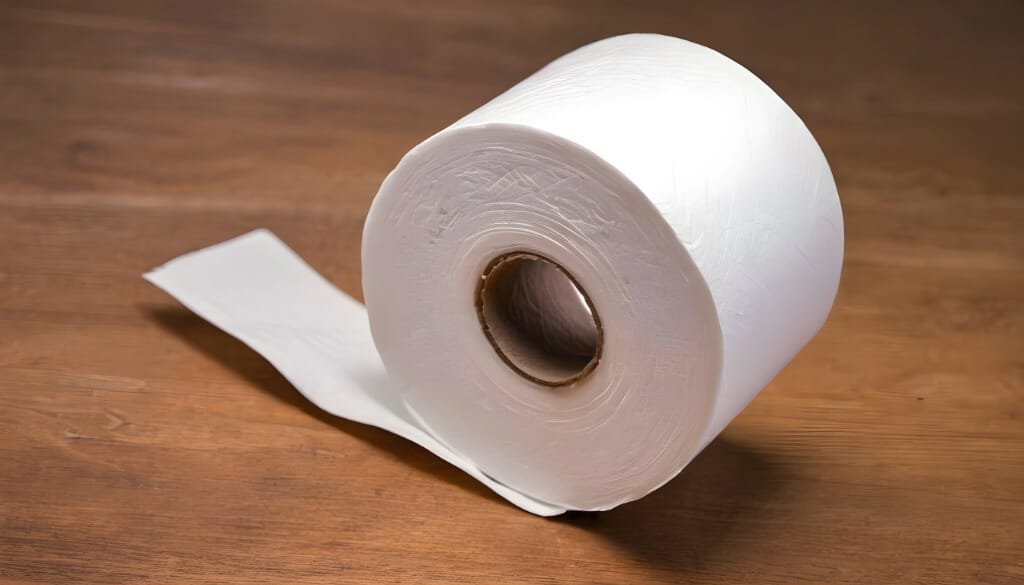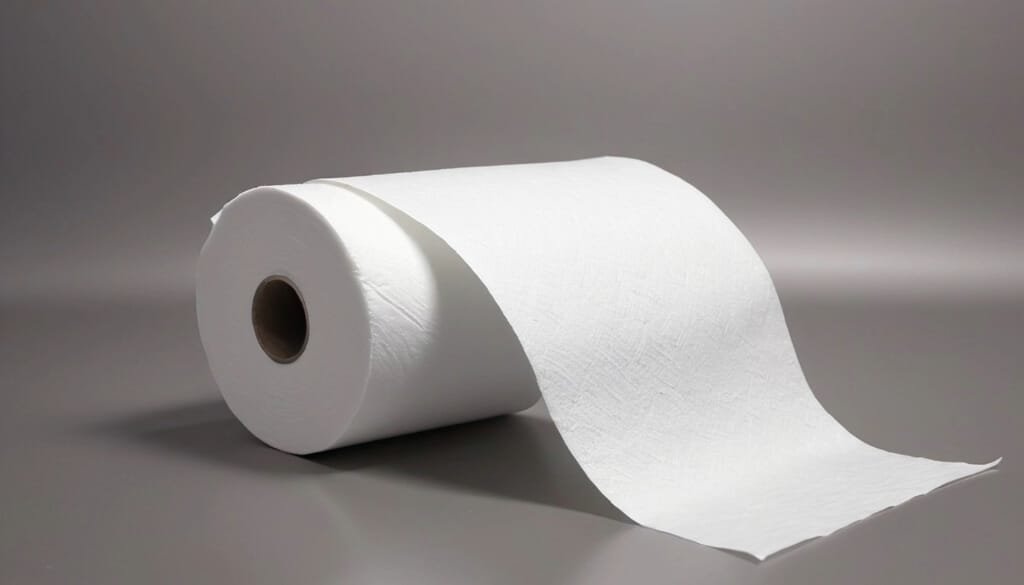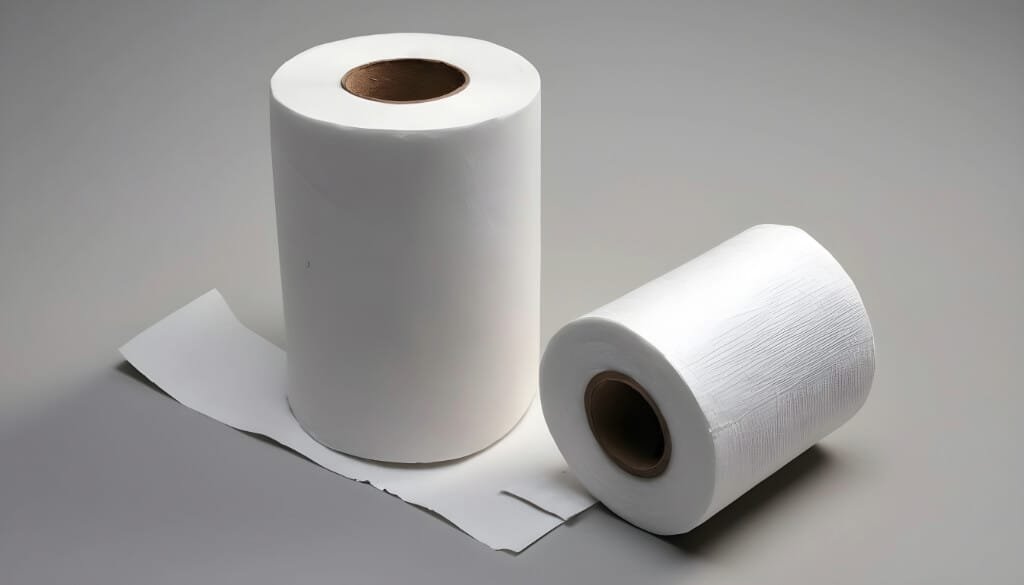In the hustle and bustle of our daily lives, few things are as integral to our comfort and hygiene as toilet paper. Yet, have you ever stopped to wonder who invented toilet paper? This seemingly mundane yet essential product has a fascinating history that dates back centuries. Exploring the origins of toilet paper not only sheds light on our past practices but also reveals the ingenuity of our ancestors.

Early Sanitary Practices Before Toilet Paper
Before the invention and widespread use of toilet paper, humanity employed a variety of methods to maintain personal hygiene and cleanliness after using the restroom. These methods varied greatly across different cultures, regions, and periods, highlighting the resourcefulness and adaptability of our ancestors in the face of basic needs.
In ancient civilizations such as Mesopotamia, Greece, and Rome, water was often the primary tool for cleansing after using the restroom. The ancient Greeks used water and stones, while the Romans utilized a communal sponge on a stick, known as a “tersorium,” which was shared among individuals in public latrines. Despite the effectiveness of water-based cleansing, these practices were often limited to wealthier individuals who had access to private bathing facilities.
In regions where water was scarce or impractical for cleansing, alternative materials were used. Leaves, grass, or even smooth stones were employed for wiping in areas where plant materials were abundant. In colder climates, such as Scandinavia, moss or snow served as makeshift toilet paper substitutes. These natural materials were readily available and, when used appropriately, provided a degree of cleanliness.
Cloth was another common material used for personal hygiene before the advent of toilet paper. In medieval Europe, wealthy individuals often had access to linen or wool cloths that were washed and reused for wiping. However, for the majority of the population, particularly during times of scarcity or poverty, reusable cloth was a luxury. Instead, materials such as straw, hay, or even discarded fabric remnants were used for wiping.
Despite the diversity of materials and methods used for sanitation, hygiene practices were often rudimentary compared to modern standards. The absence of proper sanitation infrastructure and widespread access to clean water meant that diseases and infections related to poor hygiene were prevalent. It wasn’t until the development of modern sewage systems and the widespread availability of affordable hygiene products that public health significantly improved.
The early sanitary practices before toilet paper reflect the ingenuity and adaptability of humanity in addressing basic hygiene needs. From water-based cleansing methods to the use of natural materials like leaves and cloth, individuals throughout history devised creative solutions to maintain personal cleanliness. The invention of toilet paper marked a significant advancement in sanitation practices, revolutionizing personal hygiene and shaping modern bathroom etiquette.
The First Recorded Use Of Toilet Paper
One of the earliest instances of toilet paper usage can be traced back to ancient China, where paper was invented during the Han Dynasty (206 BCE – 220 CE). The history of papermaking in China dates back to the 2nd century BCE, and it wasn’t long before this versatile material found its way into various aspects of daily life, including personal hygiene.
Historical records suggest that the Chinese aristocracy and nobility were among the first to utilize paper for sanitation purposes. It’s believed that during the 6th century CE, members of the imperial court were provided with paper sheets specifically for wiping after using the restroom. These early forms of toilet paper were likely made from soft, absorbent materials such as mulberry bark or hemp fibers.
While the use of paper for hygiene purposes may have been limited to the elite class in ancient China, it nonetheless marked a significant departure from earlier sanitation practices. Unlike materials like leaves or cloth, which were prone to tearing and abrasion, paper offered a smoother and more comfortable wiping experience.
The widespread availability of paper for sanitation likely coincided with the increasing popularity of papermaking techniques across China. By the 14th century, the production of paper had become more widespread, making it accessible to a larger segment of the population. Historical texts from this period refer to the use of paper for personal hygiene, indicating that it had become a relatively common practice among the general populace.
It’s important to note that while paper was used for sanitation purposes in ancient China, it wasn’t necessarily in the form of the familiar rolled toilet paper we use today. Instead, individuals may have used flat sheets or squares of paper, similar to modern facial tissues, which were disposed of after use.
The use of paper for hygiene purposes in ancient China represents a significant milestone in the history of sanitation. It demonstrates the ingenuity of early civilizations in finding practical solutions to basic needs and underscores the importance of papermaking technology in shaping daily life. While the invention of toilet paper may not have originated in China, its early adoption and refinement in this region played a crucial role in paving the way for its widespread use in subsequent centuries.
Toilet Paper In Medieval And Renaissance Europe
During the medieval period in Europe, sanitation practices were vastly different from those in ancient China or other advanced civilizations of the time. The concept of personal hygiene, particularly in the context of using the restroom, was often rudimentary, and access to dedicated hygiene products like toilet paper was limited.
In medieval Europe, the lack of widespread access to paper and the high cost of production meant that alternative materials were utilized for personal hygiene purposes. Wealthier individuals might have had access to finer materials such as linen or wool cloth, which were sometimes used for wiping and then washed for reuse. However, for the majority of the population, particularly peasants and commoners, such luxuries were out of reach.
Instead, more readily available materials were used for sanitation. In rural areas, where plant life was abundant, individuals might have used leaves, grass, or even handfuls of straw for wiping after using the restroom. These materials, while not as soft or comfortable as modern toilet paper, served the purpose of removing waste and maintaining a basic level of cleanliness.
In urban environments, where access to natural materials was limited, other alternatives were employed. Pieces of discarded fabric, old clothing, or even scraps of parchment or paper might have been repurposed for sanitation. However, these materials were often rough and abrasive, leading to discomfort and irritation for those who used them.
The Renaissance period brought about advancements in various aspects of life, including sanitation and hygiene. As trade routes expanded and knowledge spread, Europeans became more aware of hygiene practices from other parts of the world. This era also saw the emergence of a growing middle class with increased purchasing power, leading to greater demand for hygiene products.
Despite these advancements, toilet paper as we know it today did not become widely available in Europe until much later. It wasn’t until the Industrial Revolution in the 18th and 19th centuries that mass production techniques and improved infrastructure made toilet paper more accessible to the general population. Even then, it took time for toilet paper to become a household staple, with many people continuing to rely on alternative methods for personal hygiene.
Toilet paper in medieval and Renaissance Europe was a luxury reserved for the wealthy elite, while the majority of the population made do with whatever materials were available. It wasn’t until much later that advancements in technology and manufacturing made toilet paper accessible to people of all socioeconomic backgrounds, revolutionizing sanitation practices and improving public health.

The Modern Roll: Toilet Paper In The 19th Century
The 19th century marked a transformative period in the history of toilet paper, characterized by significant advancements in manufacturing techniques, accessibility, and consumer preferences. It was during this era that toilet paper, as we recognize it today, began to take shape and gain widespread acceptance as a fundamental hygiene product.
As industrialization swept across Europe and North America, innovations in papermaking technology revolutionized the production of paper products, including toilet paper. Mass production techniques enabled manufacturers to produce toilet paper on a scale never before seen, making it more affordable and accessible to the general population.
One of the key milestones in the evolution of toilet paper was the introduction of rolled toilet paper. Before this innovation, toilet paper was often sold in loose sheets or bundles, requiring users to tear off individual pieces as needed. However, in the late 19th century, entrepreneurs and inventors recognized the potential for convenience and hygiene in a rolled format.
The exact origins of the rolled toilet paper are a subject of debate, with multiple individuals and companies claiming credit for its invention. However, it’s widely acknowledged that the Scott Paper Company, founded by brothers Clarence and E. Irvin Scott, played a significant role in popularizing rolled toilet paper in the United States.
In 1879, the Scott Paper Company introduced the first rolled toilet paper on a commercial scale, providing consumers with pre-perforated sheets wrapped around a cardboard core. This innovation revolutionized the way toilet paper was packaged and sold, offering greater convenience and ease of use for consumers.
The adoption of rolled toilet paper was further facilitated by advancements in marketing and advertising techniques. Manufacturers touted the benefits of rolled toilet paper, emphasizing its softness, absorbency, and convenience. Advertisements featuring catchy slogans and memorable characters helped to popularize rolled toilet paper as a household staple.
By the end of the 19th century, rolled toilet paper had become increasingly prevalent in homes and public facilities throughout Europe and North America. Its widespread acceptance marked a significant shift in sanitation practices, as individuals embraced the convenience and comfort offered by this modern hygiene product.
The 19th century witnessed the emergence of rolled toilet paper as a practical and widely accepted solution for personal hygiene. Innovations in manufacturing, packaging, and marketing transformed toilet paper from a luxury reserved for the elite to an essential household item accessible to people of all backgrounds. The introduction of rolled toilet paper revolutionized sanitation practices and laid the foundation for the modern bathroom experience.
Patent Wars: Who Was The First To Patent Toilet Paper?
The quest to determine who holds the title of the first patent for toilet paper is shrouded in historical ambiguity and controversy. While numerous patents related to toilet paper exist, pinpointing the true originator remains a challenging task due to conflicting claims, incomplete records, and evolving technologies.
One of the earliest patents related to toilet paper was filed by Seth Wheeler, an American inventor, and entrepreneur, in 1891. Wheeler’s patent described a perforated toilet paper roll mounted on a holder, a design that closely resembles the rolled toilet paper we use today. His invention revolutionized the way toilet paper was dispensed and marked a significant advancement in sanitation practices.
However, Wheeler’s patent was not without competition. In the years leading up to his patent filing, other inventors had also submitted patents for toilet paper-related innovations. For example, Joseph Gayetty, an American entrepreneur, received a patent in 1857 for a product called “Gayetty’s Medicated Paper,” which was marketed as a pre-moistened paper for personal hygiene. While Gayetty’s invention was not quite the toilet paper we know today, it laid the groundwork for subsequent advancements in paper-based sanitation.
Another notable figure in the history of toilet paper patents is Thomas Seymour, who received a patent in 1867 for a “wrapping or toilet paper roll.” Seymour’s invention described a roll of paper with perforations, similar to Wheeler’s later design, but lacked the convenience and practicality of a mounted dispenser.
The question of who holds the first patent for toilet paper is further complicated by international patents and variations in patent laws across different countries. In Europe, for example, patents related to paper products and sanitation were filed by various inventors throughout the 19th century, adding to the complexity of the historical narrative.
Despite the uncertainty surrounding the first patent for toilet paper, what is clear is the impact of these inventions on sanitation practices and everyday life. The introduction of perforated toilet paper rolls marked a significant advancement in hygiene and convenience, allowing for easier tearing and dispensing of paper.
The question of who holds the first patent for toilet paper is a subject of ongoing debate and speculation. While Seth Wheeler is often credited with revolutionizing toilet paper with his patented design in 1891, the history of toilet paper patents is a complex and multifaceted story involving multiple inventors and innovations. Regardless of who holds the title of the first patent, the invention of toilet paper remains a pivotal moment in the history of sanitation, shaping the way we approach personal hygiene to this day.

The Scott Brothers: Pioneers Of Modern Toilet Paper
In the history of toilet paper, the names Clarence and E. Irvin Scott stand out as pioneers whose contributions forever changed the landscape of sanitation practices. The Scott brothers, founders of the Scott Paper Company, played a pivotal role in popularizing modern rolled toilet paper, transforming it from a novelty into a household staple.
Clarence and E. Irvin Scott were entrepreneurs with a vision for innovation and a keen understanding of consumer needs. In 1879, they revolutionized the toilet paper industry by introducing the first commercially available rolled toilet paper in the United States. Their invention replaced the cumbersome and unhygienic practice of tearing off individual sheets with a convenient and practical solution.
What set the Scott brothers’ invention apart was not just the rolled format but also their commitment to quality and consistency. They recognized the importance of softness, absorbency, and strength in toilet paper, traits that would become synonymous with the Scott brand. By prioritizing these qualities, they ensured that their product met the needs and expectations of consumers, setting a new standard for toilet paper excellence.
The introduction of rolled toilet paper by the Scott brothers marked a significant milestone in the evolution of sanitation practices. Their innovation made toilet paper more accessible and convenient for households and public facilities alike, revolutionizing the way people approached personal hygiene.
In addition to their contributions to product development, the Scott brothers were also pioneers in marketing and advertising. They understood the power of branding and storytelling in shaping consumer perceptions and behaviors. Through clever advertisements and promotional campaigns, they positioned Scott toilet paper as a symbol of comfort, reliability, and modernity, capturing the hearts and minds of consumers across the nation.
The success of the Scott Paper Company propelled the Scott brothers to prominence in the world of business and innovation. Their legacy lives on today in the continued popularity of Scott toilet paper and the enduring impact of their contributions to the field of sanitation.
The Scott brothers’ pioneering spirit and entrepreneurial vision transformed toilet paper from a humble commodity into a household essential. Their invention of rolled toilet paper revolutionized sanitation practices, setting a new standard for convenience, comfort, and cleanliness. Through their innovation, dedication, and marketing prowess, Clarence and E. Irvin Scott left an indelible mark on the history of toilet paper and the way we approach personal hygiene.
Evolution Of Toilet Paper: From Plain To Perfumed
Over the years, toilet paper has evolved from a simple sanitary product to a symbol of comfort and luxury. From the introduction of scented and patterned toilet paper to advancements in softness and durability, manufacturers have continually innovated to meet consumer preferences. Today, toilet paper comes in a variety of options, catering to diverse tastes and needs.
Final Thoughts
The question of who invented toilet paper is shrouded in historical ambiguity, yet its impact on our daily lives is undeniable. From ancient practices to modern innovations, the evolution of toilet paper reflects our ongoing quest for cleanliness and comfort. As we continue to use this humble yet essential product, let us not forget the ingenuity of those who came before us.
FAQs
Who Is Credited With Inventing Toilet Paper?
While the invention of toilet paper is often attributed to various individuals throughout history, the Scott brothers, founders of the Scott Paper Company, played a significant role in popularizing modern rolled toilet paper.
When Was Toilet Paper First Patented?
The first recorded patent for toilet paper dates back to the late 19th century, although earlier forms of paper-based sanitation existed in ancient civilizations such as China.
What Were Some Early Alternatives To Toilet Paper?
Before the widespread use of toilet paper, people utilized materials such as leaves, sponges, and even discarded cloth for personal hygiene purposes.
How Has Toilet Paper Evolved?
Toilet paper has evolved from simple, unadorned sheets to scented, patterned, and ultra-soft varieties, reflecting advancements in manufacturing and consumer preferences.
Also Read: Unraveling The Secrets Behind Mona Lisa’s Enigmatic Smile
